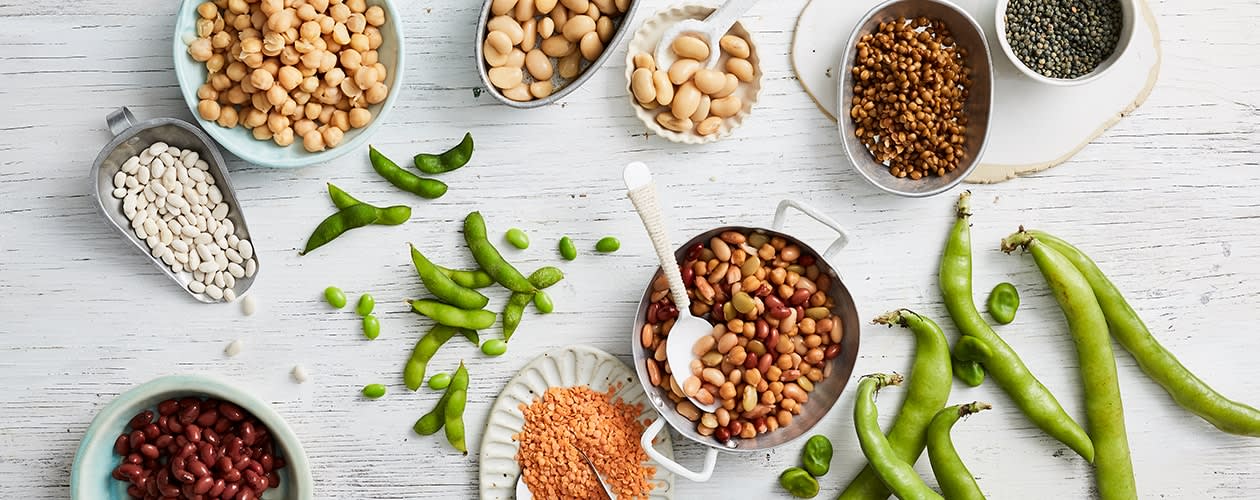Health benefits of grains and legumes


7 grains and legumes to try
Grains and legumes are filled with nutrients including protein, fibre and antioxidants. Multiple studies have demonstrated a link between eating wholegrains and reducing your risk of major lifestyle diseases. The studies found that 2-3 serves of wholegrains daily may reduce your risk of cardiovascular disease, type II diabetes and certain cancers by 20-30%. So if you want to eat more of the grainy stuff but don’t know where to start, here’s the breakdown.
Barley
Wholegrain barley was grown as an ancient crop but because it has a low gluten content wheat became the superior choice for bread-making. Pearl barley is hulled to remove the outer layer, so it’s technically no longer a wholegrain but it’s still a nutritious addition to soup mixes due to its high fibre content. You can buy this type of Barley in packets labelled “Pearl Barley” in the flour aisle of your supermarket.
Corn
Also called maize, corn is a sweet wholegrain that can be eaten as a whole vegetable or made into a range of products including popcorn and corn meal. It’s a staple crop of the Americas and comes in a variety of colours from yellow to purple. It’s a good source of fibre and contains vitamins thiamine, B6 and C. The yellow variety of corn meal is more commonly known as polenta and can be made into a corn porridge or mash.
Corn is also a ZeroPoint® food on the WeightWatchers program. What are ZeroPoint foods? They are nutritional powerhouses that you can reach for frequently and consistently, without weighing, measuring, or tracking them. They were specifically chosen because they are nutrient-, vitamin-, and mineral-packed.
Corn provides dietary fibre which is important for overall health, and also helpful for weight loss (it can help you stay fuller, longer). Fibre also plays a role in both digestion and heart health. Corn is a source of lutein and zeaxanthin, both of which are beneficial for eye health. And both help form the foundation for a healthy pattern of eating.
Lentils
Not officially a grain – lentils fall in the legume category. Unlike other legumes, lentils don’t need to be soaked prior to cooking. There are many varieties of lentils including yellow, red, brown, green or French Puy. Lentils have a nutty flavour and hold their shape when cooked. They’re a good vegetarian source of protein and a great way to add fibre to any dish. Lentils take anywhere from 20-45mins to cook, depending on the variety. Just add them to your curry or soup, simmer and voila!
Lentils and legumes are also a ZeroPoint food on the WeightWatchers program. Why? They are nutrient-dense foods and are a good source of dietary fibre, potassium, zinc, iron, and folate. Dietary fibre helps you feel fuller, longer, which is helpful for weight loss, and also plays a role in digestion and heart health. Potassium is also important for heart health and zinc plays a role in immune function.
Millet
A very hardy, gluten-free grain, millet can be ground to make flour, or boiled and eaten like rice. It’s rich in nutritious carbohydrates, dietary fibre and potassium. In India, millet flour is made into leavened pancakes called dosa, and thinner, unleavened flatbread called roti. Millet is great as breakfast porridge, tossed into soups or even baked into cookies or muffins for extra crunch. You can buy millet from any wholefoods store.
Buckwheat
The perfect pancake partner, buckwheat is also used to make Japanese soba noodles. Technically not a grain, buckwheat is a gluten-free seed, like quinoa. Buckwheat recently rose to “superfoods” status due to its amount of protein, fibre and antioxidants. It also makes anideal partner for gluten-free baking.
Black rice
Black or purple rice is a particular species grown for its natural plant pigments called anthocyanins, which are also found in blueberries and are rich in antioxidant activity. Just like white rice, black rice can come in long or short grains and is frequently used in sushi’s or desserts. Black rice can be found in most wholefood stores.
Quinoa
Originating from the Andes, quinoa (pronounced keen-wah) has long been cultivated by the South American Inca people. It comes in white, red, purple and black varieties (sometimes mixed in the one packet). It’s best to rinse quinoa before cooking, otherwise it can taste a bit bitter. Quinoa will cook in about 15mins or until the liquid is absorbed and is perfect for a variety of dishes such as porridge, muffins, cookies or soups.